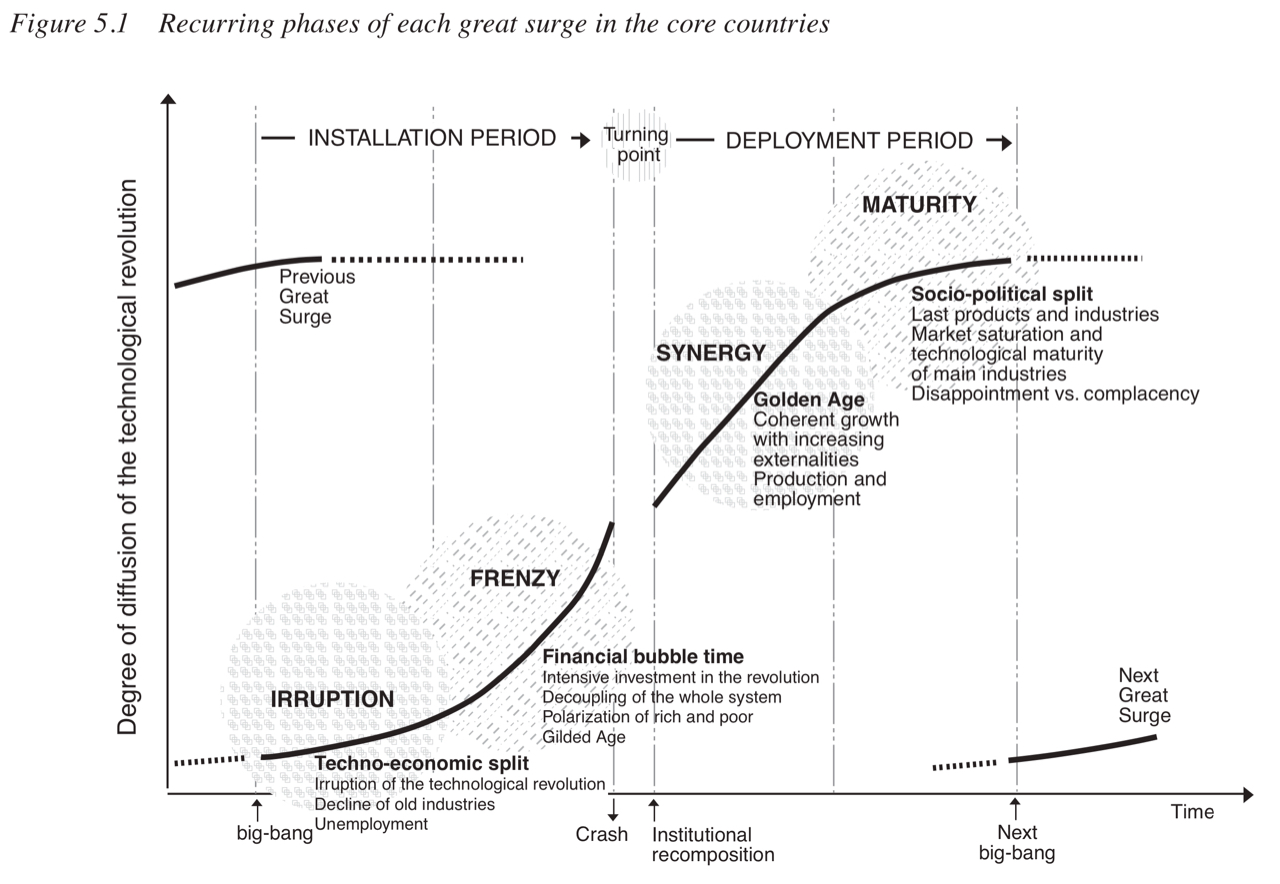
Some of my favorite writing is the kind that I think may be wrong, but makes me check all of my assumptions. The essay is one of those pieces. Will Manidis and John Kennedy—both founders themselves—propose a new theory of software companies, one where SaaS is fueled by low costs and generative AI. I’m not sure I fully buy it, but it did cause me to seriously reevaluate my assumptions about how tech companies will be built and grow in the future. Their thesis is strong, and their writing is compelling. It’s worth reading for a bold vision of what the future can be. —Evan
When we started our companies in the late 2010s, we heard the same advice about how to raise money from venture capitalists in the pursuit of fast growth: Founders would need to raise significant sums of venture capital to incur fixed costs like software developers and sales reps that would pay back over time. Robert Smith, who founded and grew the private equity firm Vista Equity Partners over the last two decades to manage over $100 billion worth of assets, did so on the idea that “all software companies taste like chicken. They’re selling different products, but 80 percent of what they do is pretty much the same.”
Our two companies pursued dramatically different opportunities—John’s offering analytics and automation to school districts, Will’s processing unstructured healthcare data—but the investments we made and pressures we felt were identical. We both raced to build out teams with expensive talent in the hopes of growing quickly, just to raise more money and accelerate the cycle again.
This paradigm is now saturated. Under the surface, software businesses are shifting from fixed cost to variable cost, enabling new high-margin business models and empowering founders with more leverage over the future of their companies. Software is becoming commoditized as a category, and the businesses asset-light. This new model will transform how software companies are built, funded, and operate.
The median bootstrapped B2B SaaS company currently spends around 90% of its annual recurring revenue on costs—25% on go-to-market strategy and execution, 24% on research and development, 15% on administrative and miscellaneous expenses, 13% on website hosting and implementation, and 10% on customer retention. Each of these categories of cost is now a whole ecosystem in the SaaS world. Because “all software companies taste like chicken,” whether you’re selling to hospitals, school districts, or local retailers, you’re tackling the same problems that SaaS companies before you have mastered—except that now there are innumerable LinkedIn thought leaders, expensive consultants, and off-the-shelf products to which you can turn for support.
The SaaS ecosystem has fully matured. Each of those buckets of fixed costs can be selectively ignored, automated, delegated, or consumed as a service. Today, companies can forgo hiring sales and marketing people, and produce millions in free cash flow by selling their products through re-sellers (like AWS) with large client bases. While a custom research and development project used to be the domain of million-dollar contracts, you can now buy a basic Django web app from a Replit bounty for $650 or monetize a scalable business intelligence tool built by AWS or Microsoft. Scaling operations used to require headcount; now all you need are virtual assistants. SaaS products like Zapier or Intercom that power countless vertical market software companies are increasingly charging for their service as consumption: software paid by the task, not, as customarily, by user by the year.
This future was emerging before our current generative AI moment; it will only accelerate if companies can use large language models to automate junior-level work. Generative AI is quickly ushering in a new frontier for software, where organizational structures, cost structures, and growth strategies can and should be re-imagined.
Three theories of an AI-driven SaaS future
The large language models we use, like GPT and Claude, represent an implementation of a general algorithm to simulate human intelligence. The key word is “simulate”: These models do not yet have intelligence—they simulate it, based on an enormous amount of training data. As the quantity and quality of training data increases, the simulations become more accurate, but in the absence of consistently high-quality training data, the models can “hallucinate” and produce a poor impersonation of what a human might say. So despite the rapid advancement, attention to, and speculation about what’s next, this technology is nascent. Even at this early stage, however, a few themes are clear.
Generative AI : content :: internet : distribution
The Internet offers programmatic, global-scale content distribution at no marginal cost. This feature was transformative to our economy and society. It enabled software products to be delivered over a browser and priced as a service (SaaS), instead of delivered on a CD and paid for up front. It connected disparate populations and geographies, as, for example, live meetings could happen on a videoconference instead of in person. As more of our social and economic interactions happened natively to the internet, it fragmented our legacy geographic ties, undercut the institutions of organized religion, and connected romantic partners.
Generative AI offers programmatic, global-scale content creation at a diminishing marginal cost. This feature is an industrial revolution for white-collar work. In the same way that capturing energy enabled the creation of goods with machines, not by hand, programmatic content creation enables an enormous amount of knowledge work to be done with computers, not by hand.
Generative AI represents a classic technological revolution
In Technological Revolutions and Financial Capital, researcher Carlota Perez argued that new technological paradigms—the microprocessor, the internet, the steam mill—follow similar patterns of deployment into the broader economy and society at scale. (You may also want to read this summary of the book or Ben Thompson’s analysis.) These revolutions create financial and political cycles that follow a similar pattern. They begin with a “big bang” that catalyzes a frenzy of investment into installing the technology. This frenzy drives a bubble, which ultimately crashes, but from which emerges a period of steady adoption and deployment.
The Only Subscription
You Need to
Stay at the
Edge of AI
The essential toolkit for those shaping the future
"This might be the best value you
can get from an AI subscription."
- Jay S.
Join 100,000+ leaders, builders, and innovators

Email address
Already have an account? Sign in
What is included in a subscription?
Daily insights from AI pioneers + early access to powerful AI tools







Comments
Don't have an account? Sign up!
When AI can reverse engineer the vertical specific workflows, which inform the software design itself—that is, AI as product manager—the tipping point will have arrived.